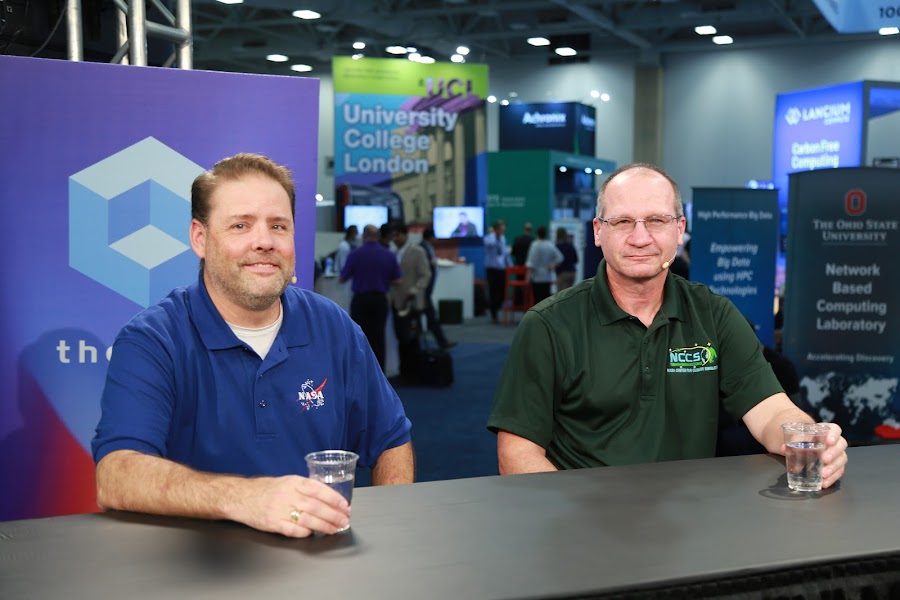 EMERGING TECH
EMERGING TECH
 EMERGING TECH
EMERGING TECH
 EMERGING TECH
EMERGING TECH
NASA routinely sends rockets into space, but it is also heavily invested in the business of collecting data.
Scientists collect observations from satellites, the International Space Station, balloons, ships, airplanes and ground stations to better understand Earth systems and predict major climate changes in advance. It’s an ambitious undertaking, one that requires a blend of artificial intelligence, machine learning, high-performance computing, and human experts to make sense of it all.
“It’s trying to understand the entire Earth system as best as we can,” said Dr. Dan Duffy (pictured, right), chief of the Computational and Information Sciences and Technology Office at the NASA Goddard Space Flight Center. “Observations coming in near real time are fed into an Earth system model to be able to predict short-term, mid-term and even long-term with some degree of certainty. We are trying to work toward that high resolution, immediate impact model that we can share with the world.”
Duffy spoke with theCUBE industry analysts Savannah Peterson and David Nicholson at SC22, during an exclusive broadcast on theCUBE, SiliconANGLE Media’s livestreaming studio. He was joined by Dr. Bill Putman (pictured, left), associate chief of the Global Modeling and Assimilation Office at NASA Goddard Space Flight Center, and they discussed the agency’s reliance on HPC and supporting an open science model. (* Disclosure below.)
With so much real-time data that needs to be processed, NASA relies on HPC to generate the insight it needs. It is a constant process of pushing the envelope in terms of speed, according to Putman.
“We’re focused on HPC to integrate those observations,” he said. “The limiting factor for us as scientists is how fast we can get an answer. We can do more and push the questions even further. Once we’ve gotten fast enough to do what we want to do, there’s always something next that we want to look for.”
NASA has made a long-term commitment toward building an open science community over the next decade. This involves an agreement to share software, data and algorithms as early as possible in the scientific process, with the goal of creating a highly accurate repository of information and eliminating model bias.
“NASA is trying to make a push toward open science,” Duffy said. “Scientists need to be as transparent as possible with the datasets in the research that we’re doing. If we can get this data put there that anybody can use in an equitable way and as transparently as possible, that’s going to eliminate the bias over time. Mistakes will be found, and mistakes will be corrected.”
Here’s the complete video interview, part of SiliconANGLE’s and theCUBE’s coverage of the SC22 event:
(* Disclosure: This is an unsponsored editorial segment. However, theCUBE is a paid media partner for SC22. Neither Dell Technologies Inc., the main sponsor for theCUBE’s event coverage, nor other sponsors have editorial control over content on theCUBE or SiliconANGLE.)
Support our mission to keep content open and free by engaging with theCUBE community. Join theCUBE’s Alumni Trust Network, where technology leaders connect, share intelligence and create opportunities.
Founded by tech visionaries John Furrier and Dave Vellante, SiliconANGLE Media has built a dynamic ecosystem of industry-leading digital media brands that reach 15+ million elite tech professionals. Our new proprietary theCUBE AI Video Cloud is breaking ground in audience interaction, leveraging theCUBEai.com neural network to help technology companies make data-driven decisions and stay at the forefront of industry conversations.